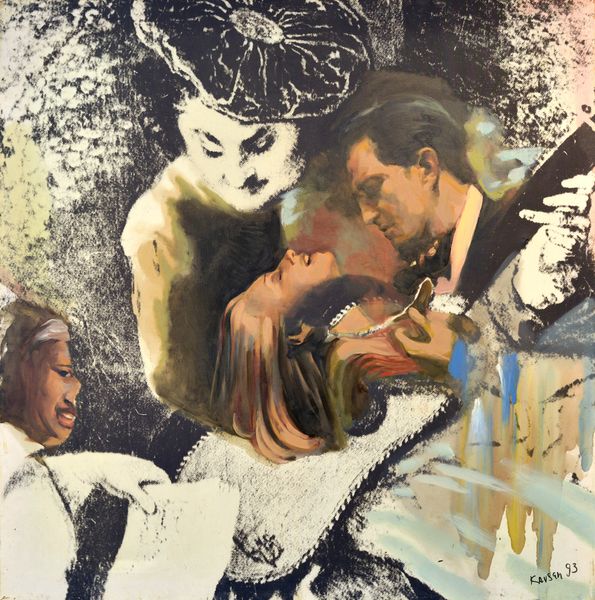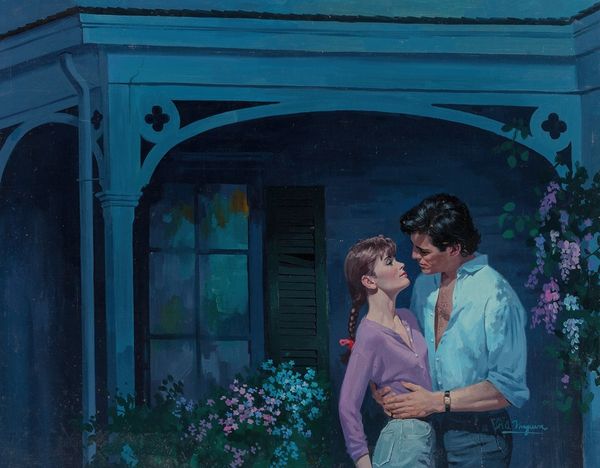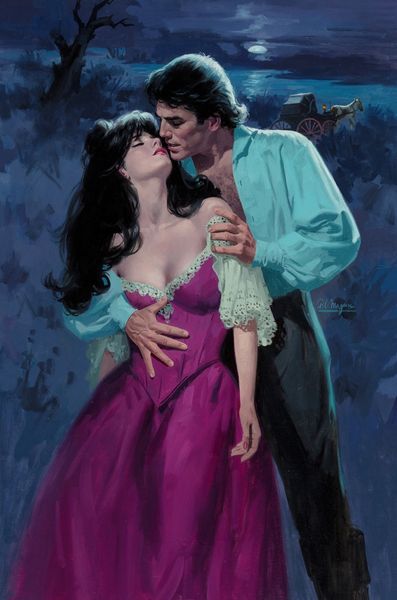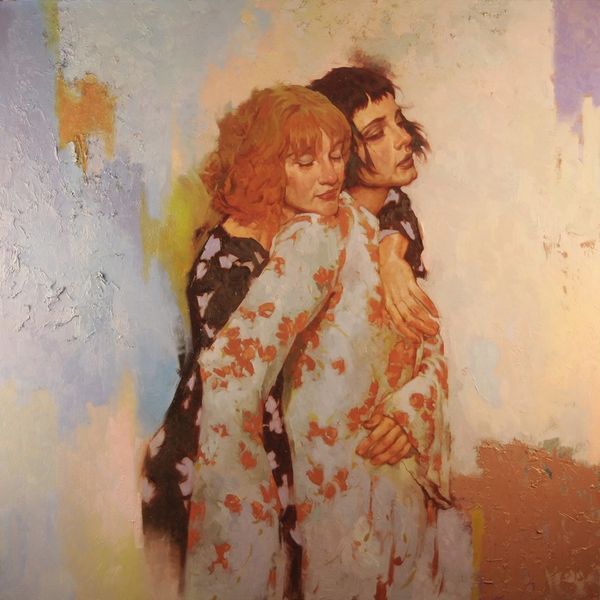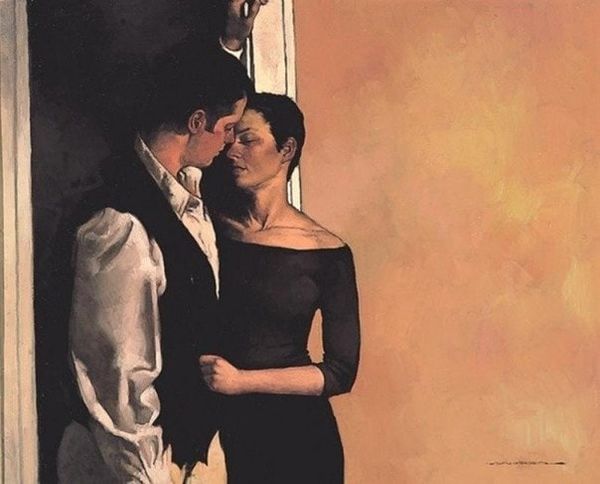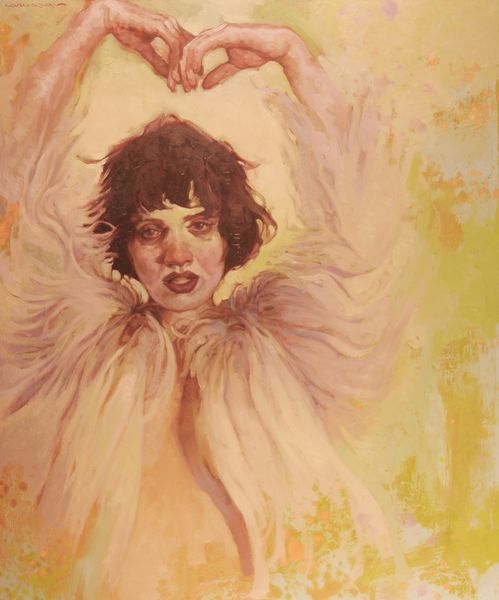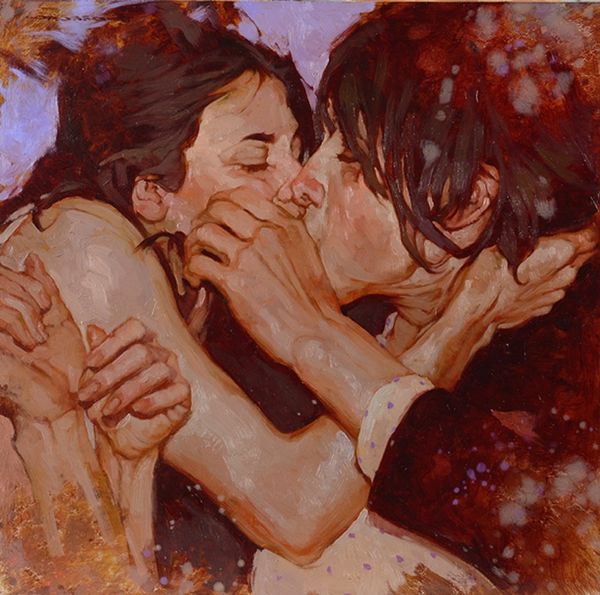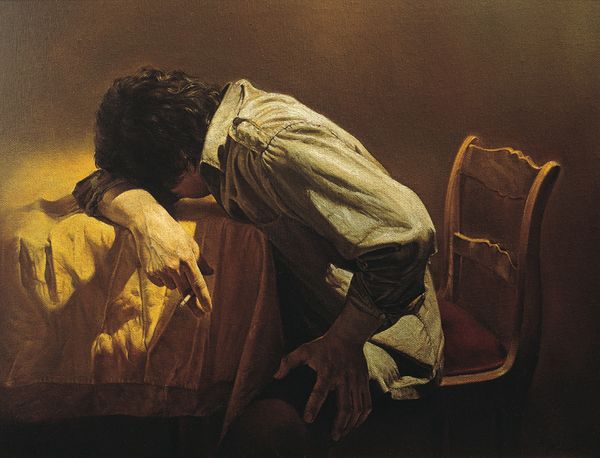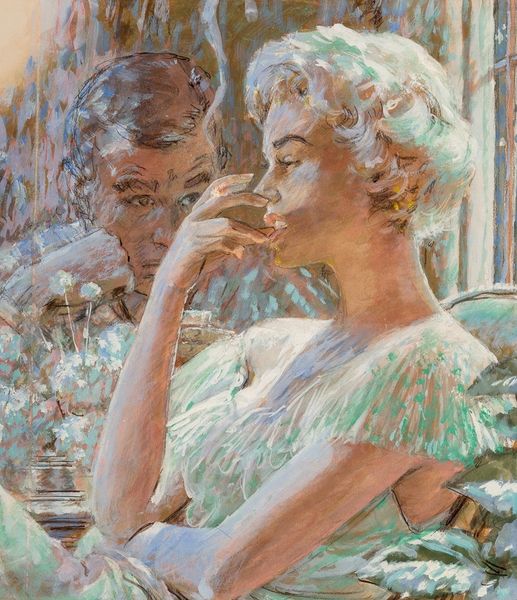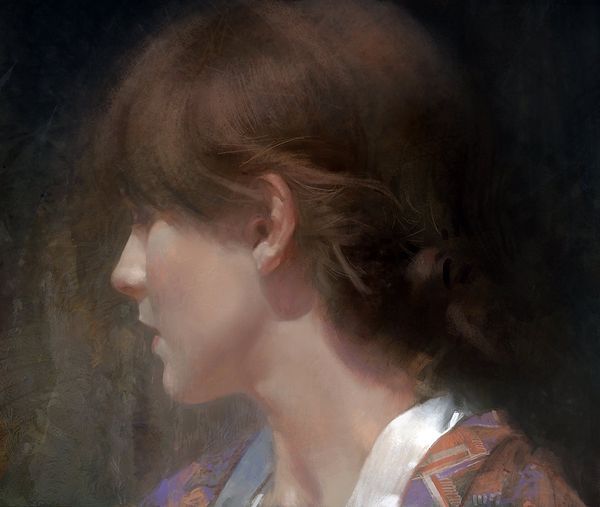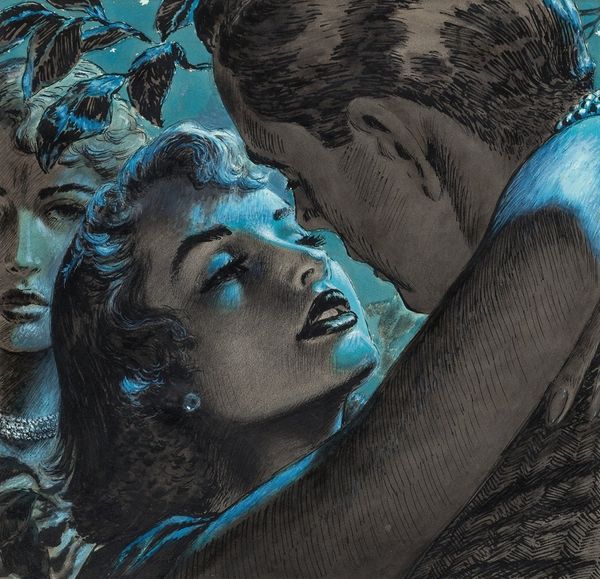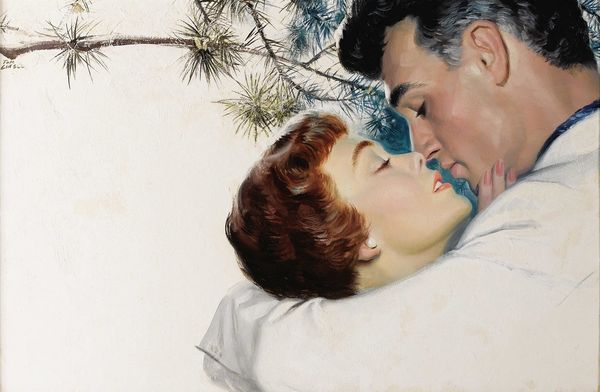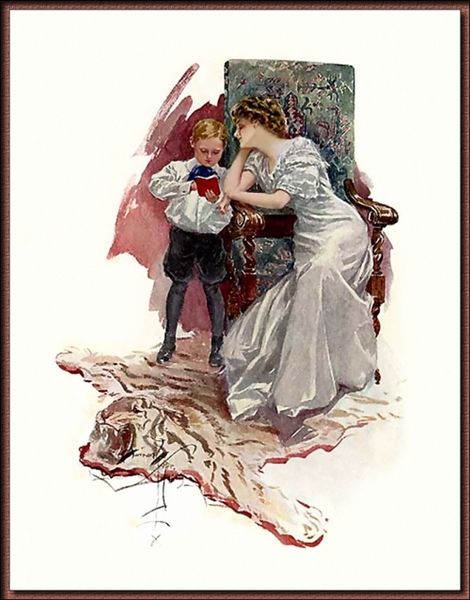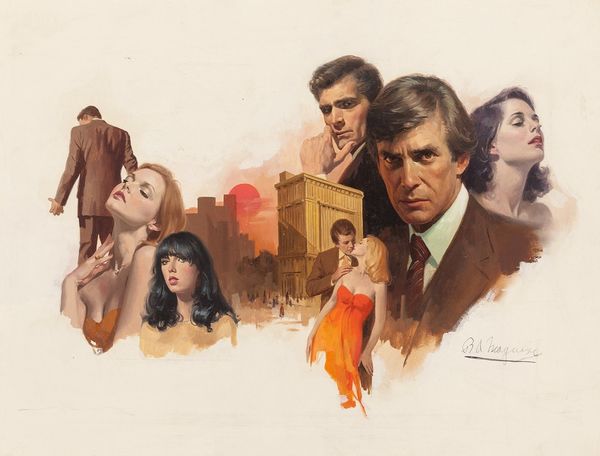
Copyright: Modern Artists: Artvee
Curator: Oh, I feel a romantic longing just looking at it. Editor: This is "Somewhere in Time," painted by Robert McGinnis in 1980. It's an oil painting, isn't it? The soft rendering has that familiar, luminous quality we often see in oil. What’s catching your eye so immediately? Curator: Definitely the lovers floating at the top, amidst what seems like a vintage dream. The hazy flowers, their clasped hands. It's a scene from a lost world, literally fading into sepia. Down below though, you have that sharp contemporary portrait looking directly out. Quite a stark contrast. Editor: That contrast is central, I think, given that this was created as the cover art for the paperback edition of Richard Matheson's novel "Bid Time Return". McGinnis had a gift for distilling the core narrative in a single image. Book covers were his canvas, so to speak. Curator: Absolutely. And that central character's eyes pull me in. There's a vulnerability there, mixed with almost fearful recognition, or premonition. The woman is like his impossible fantasy or recollection. The soft glow around them makes her feel almost ethereal, ungraspable. I see the romanticism you mentioned. Editor: Exactly! Romance novels weren't simply churned out of nowhere. In McGinnis’ time, they exploded into popular culture and played out in public debates, too. Romantic longing wasn't just individual feeling, it reflected society’s needs, desires, anxieties too. And look at the film based on this novel: It romanticized escapism! The book was better but the movie also took off with Christopher Reeves... Curator: You are spot-on! The fact that the style romanticises it so much—look at his oil paints, the choice to put more of a painting inside a painting to heighten the dream feeling–adds layers of emotion to it, which make me question escapism. How does one grapple with longing to escape their life in order to join with someone or a time in the past. That can be so isolating if indulged in for too long... Editor: Right. And what do the commercial needs of this particular imagery do when amplified in such a widely distributed format like this? Book covers act as advertisements that communicate very particular expectations. We bring our history and our assumptions with us when looking at work such as this. Curator: Ultimately, I love its dual message that urges me to face what it truly means to engage with memories. It feels that a love worth pursuing requires immense courage that may challenge one to leap, but to first accept one’s reality. Editor: A great leap forward into time… and into critical engagement, indeed! Thank you for this journey.
Comments
No comments
Be the first to comment and join the conversation on the ultimate creative platform.
